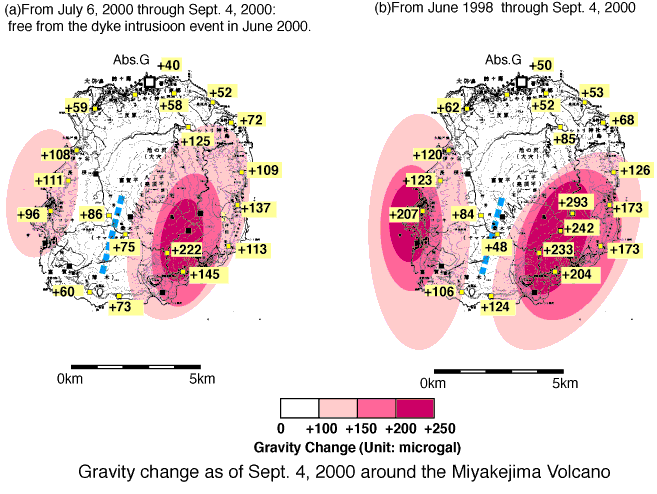"Spatio-temporal Gravity Variation During the 2000
Volcanic Activity of the Miyakejima Volcano, Japan (2)"
presented by the ERI Gravity Group: Shuhei Okubo
(okubo@eri.u-tokyo.ac.jp), Masato Furuya, Sun Wenke, Yoshiyuki
Tanaka, Hidefumi Watanabe, Jun Oikawa, Tokumitsu Maekawa
The figures below show gravity change as of Sept. 4, 2000
since June 1998 and since July 6, 2000. Gravity decrease expected
around the summit(center) cannot be verified because danger to human
life prevents access to the observation point. Most spectacular in
the figures is the butterfly pattern with a
symmetry axis stretching from the center to the southwest of
the island. It suggests the closing of a dyke
below the axis, which supports the idea of sucking the magma
beneath the island. In addition, the tensile closing offers adequate
explanation why crustal movement is larger in
the southern part than in the northern (refer to the GPS
analysis).

"From a
Vacuum Cleaner to a Butterfly : Interpretation"
�$B!&�(J We proposed a vacuum cleaner
model in the previous issue to explain the ever growing
caldera collapse without significant mass ejection. The model
naturally predicts closing of a dyke, if it does exist. More rigorous
analysis based on the dislocation theory is now under way.

